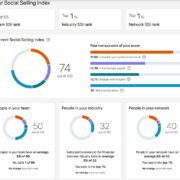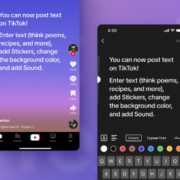15 steps to optimise your digital marketing ROI in 2024
Boost your digital marketing ROI with a smarter budget
With economic uncertainty ahead – well, it’s a constant, isn’t it? – budgets get tighter.
That makes Return on Investment (ROI) even more critical.
You’ll need to stretch each euro further through smarter budgeting.
Follow these 15 steps to optimise your digital marketing budget & ROI.
1: Start with a Clear Plan and Keep it Flexible
Set clear strategic goals and map related tactics to achieve them. A plan provides direction, optimises resources, and makes measurement easier.
Know where you want to go before determining budget. Plans set the direction in line with the company objectives, but don’t have to be too rigid: periodic revision helps to adjust the trajectory, considering that forecasts might be incorrect and the market is dynamic so changes must be faced timely.
2: Audit Your Tech Stack
Take stock of your martech and tools. Look at upgrades needed and potential new investments to support goals. Don’t forget to take into account cybersecurity, business continuity and indirect costs.
Some tools are cool but not safe (mind giving access to internal documents or API keys to unknown developers).
Other tools might disappear leaving you with no alternatives – it happens frequently when working with cool startups that go bankrupt or are acquired by other companies that change their offer and pricing.
Not least, some tools might be cheap or totally free, but their implementation still has a relevant cost.
Think of switching costs (training internal staff), developing costs, hosting, security, customisation, possible increase in pricing, integration with other tools or platforms, etc. The final price of a tool is not just its cost.
3: Analyse Current Spending
Critically assess this year’s expenditures. Identify what worked and didn’t. Shift budgets accordingly. Things don’t always need to be the same. There’s no best recipe, even when it works. Because everything can always be improved.
4: Calculate Task Time
Account for team and task time in your budget, like content creation and asset production. Demonstrate work required – not always easy to estimate, but the more you’ll track, the more you’ll get a rough idea of the real time spent on single tasks. Some might be avoided, and processes can be improved adopting collaboration tools, saving time, hence costs (because time is money).
Minimise emails, calls/meeting duration and distraction time (for example avoiding copying in an email or inviting to a meeting staff not required).
Any distraction costs time, which is money. In the long term, it’s an important part of the total costs that could have been saved and invested in some more productive resources, tools, tasks.
5: Leverage External Support
Estimate needs for freelancer or agency support. Specialists bring expertise your team may lack.
However, when working with freelancers mind their availability and business continuity: if they have too many clients they might get slower or outsource to low skills collaborators. They might also stop the contract if they have a more inspiring or rewarding project to follow.
In terms of agencies, mind those ones that don’t have internal staff and just collect freelancers extra charging for that.
They also tend to charge more to cover their indirect costs, and often most of the work is carried out by interns or junior profiles despite you’ll pay at senior level.
Employees help to leverage internal skills, save costs and time (less calls, meetings, emails, that are normally charged too when working with agencies) and, not least, employees learning stay in-house while an agency might resell it to your competitors in the future.
6: Budget for Paid Social
Allocate funds to promote key social posts beyond low organic reach. Combine with employee advocacy – try an ambassadorship program – for maximum impact.
Employees network is a great multiplier. On social media channels, brands must talk with people’s voice, better if others talk about a brand, rather than the brand itself self-claiming achievement.
Paid Social helps to reach a narrow audience interested in a specific content. You don’t need to target the world to talk to a few people.
Organic social is not effective in this sense, because its reach is generally low and often out of target, especially for niches hard to reach.
7: Enhance Existing Efforts
Before launching new initiatives, optimise current ones. Reallocate to improve ROI on previous investments.
Why rebuilding the wheel when little adjustments can bring great improvements?
Don’t forget the Pareto’s law before dismantling stuff. Don’t be like those sport teams that after a few bad results change the coach, forgetting that a team is a team, and results don’t depend on a person.
8: Align Sales and Marketing
Shared budgets foster collaboration between sales and marketing teams, aligning goals. If teams don’t share the same reward, a competition between them will be unhealthy.
Depending on the type of market and product, as well as internal governance, a company normally tends to emphasise more sales or marketing – despite other be predominant too, like product management or CX. The more company elements are integrated, sharing success (and learning together from failure), the better results will be in the medium/long term.
Silos don’t work. Startups have an advantage in being smaller hence more agile, but on their side, growing fast tends to cause confusion and overlaps, difficult to sort out when experience and employee retention is lower – differently than dinosaurs.
9: Test and Adopt New Metrics & KPIs
If it’s the case, implement leading indicators for revenue streams and renewals, like Sales Velocity and Account Health Scores. Some ads platforms have plenty of metrics but there’s no need to waste a life deep diving into numbers that don’t bring learning and action. Instead, try to build your own KPIs focusing on specific segments, products, actions, trying to identify correlations between metrics. AI tools like GPT can greatly help on both quantitative (making sens of huge raw datasets) and qualitative metrics (for example sentiment analysis).
10: Follow the 70/20/10 Rule
Allocate budget as: 70% proven strategies, 20% new avenues, 10% experiments. Save some time for brainstorming, learning, testing new tools and strategies before their implementation. Assumptions never works (and if they do you’ve just been lucky – luckiness is not sustainable).
11: Get Inspired from the Industry
Make time for learning. Attend events and allocate training budget for the team. The best way to learn is to do, so avoid static resources, useful only when needed, but save time and space for little experiments that, beyond new skills, might be the seed of future successful campaigns.
12: Save Time with Templates
Leverage pre-built budget templates as helpful starting point. Speed-up work by substantially reducing time spent on routine tasks.
13: Focus on Actionable KPIs, not just Metrics
Derive value from your data. Turn findings into actionable insights and business impact. Key Performance Indicators (KPIs) must be actionable.
Switch from periodic static reports to dynamic dashboards (for example Looker Data Studio or PowerBI) that allow changing timeframe and go granular.
Try to integrate channels (online and offline) to provide an holistic view of your marketing efforts. Don’t get crazy with attribution models: no model is perfect and often, picking the wrong one might lead to wrong assumptions, instead of optimising your campaigns and spending allocation.
14: Track Performance Continuously
Measure and adjust your campaigns periodically, according to performance. Optimise spend across channels based on results: what counts most are KPIs, not simple metrics (for example engagement rate, not just vanity metrics like followers or impressions).
15: Secure Stakeholder Buy-in
Get leadership support through concise, data-driven plans conveying ROI. Numbers tell more than words. Your goals must always be SMART: Specific, Measurable, Achievable, Relevant, and Time-Bound.
Smarter budgeting takes work but pays dividends. Following these tips will stretch your dollars further and elevate results. Take the time to plan and set your marketing up for success in 2024.
Do you need help with your Digital Marketing strategy?
Ask Oltre Digital








